
HORECA 2024
has little in common with pre-Covid Horeca
If you think that Horeca is still the same and you are applying the same procedures to it as before Covid, you have probably missed the proverbial train.
But before we delve more into the trends in Horeca, let’s first compare whether we perceive the concept of Horeca in the same way.

For us at Data Servis, this is a market that includes all businesses such as restaurants, pubs, cafes, bars, bistros, fast food, clubs, etc. that are freely accessible to the public.
Without knowing the typology and structure of Horeca you are aiming blindly
We were the first (research company) to map and define the structure and concept of Horeca 26 years ago. Our setup was and still is the standard for most companies in the Czech Republic and Slovakia that operate in this market. When we started Horeca, no one was working with this market, no one knew how to grasp and measure it. The logical first step was to define and describe the market. How big is the market in terms of the number of outlets. And how structured it is.
We taught the Horeca suppliers that they cannot work with the market as a Retail, and certainly not as a whole, because each segment has a different character, different customers and it is therefore necessary to adjust the range of products according to the profile of the outlets and their guests.

Reality and data show that from the windows of a Prague or Bratislava office, businesses look different from those in Uherské Hradiště or Vranov nad Topľou.
The diversity of the market is evident when you look at the detail of the different segments of outlets – some focus on food, others on beer, coffee, drinks or entertainment. The importance of segments changes over time, as does the importance of regions or urban areas.

For us, each outlet is individual and each one is described in detail.
TYPE OF OUTLET | NUMBER OF VISITS PER DAY | AVERAGE GUEST SPENDING | YOUNG vs OLD |
PROPORTION OF MEN AND WOMEN | REASON FOR GUEST VISIT | CORE PRODUCT RANGE | PRICES
Representativeness of the sample is a necessary condition for relevant data from Horeca
For years, a basic question our clients have been asking us is how many operating outlets there are in Horeca, how many are in each segment, and what the potential of those segments is for their products. These facts cannot be ascertained other than by direct mapping in the market. Realistically, we need to actually physically count the outlets, map their descriptions of character, offerings, locations, integration into chains and determine their individual performance in order to define the true potential of each outlets and then the entire market. The representativeness of the sample is only maintained by working with the entire market and its exact structure. Today, we also use online access to databases of outlets and continuously have a unique database of all outlets with the evolution of their changes and transformations in the types of outlets as time went by.
It is risky to use only online sources as many outlets that are no longer operating are still listed as active. These downloaded databases are then often oversized and duplicated.
How important it is to look closely at outlets in the regions:

The most significant post-Covida changes in Horeca were influenced by visitors
Speaking of the Horeca structure, the biggest milestone was Covid! Changes have taken rapid momentum in terms of product range, transformation of business types and a fundamental change in guest behaviour. Horeca had to change too. All the trends we see in Horeca are due to the changing demands of visitors.
Some suppliers think they are able to influence trends with their power and financial resources, but the effect usually only lasts for a short period of time, usually one season. People are attuned to short-term trends, they succumb to change more quickly, their loyalty to novelty is almost at zero to freezing point. They will try a new thing, but if they don’t adopt it as their own, it will be forgotten by the next season.

Thanks to Horeca’s own panel of several thousand visitors, we are able to precisely target individual consumers of drinks, food and brands and track changes in their behaviour and preferences over time. In discussion groups with visitors, we analyse their attitudes towards new market trends and their expectations. It is from this continuous monitoring that we are able to define the reasons for the current situation and also predict future trends that fundamentally affect Horeca.
Structure of DS On line panel for Horeca visitors
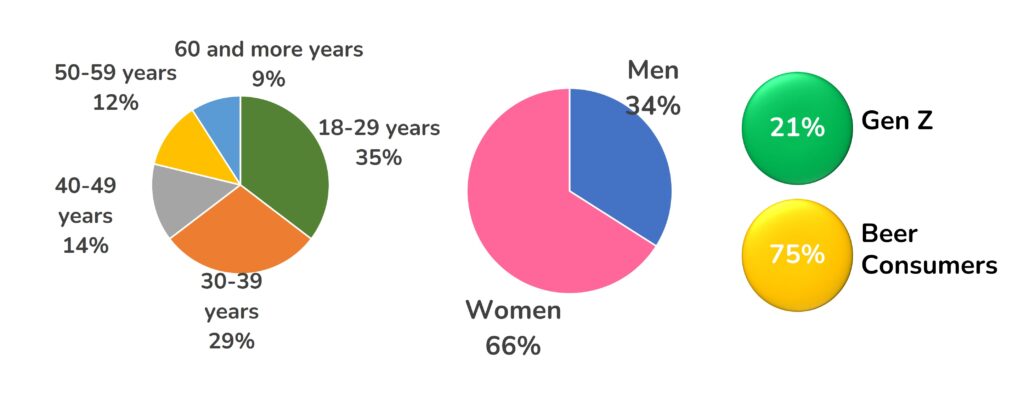
Main trends in the current Horeca
1. People are coming back to eat
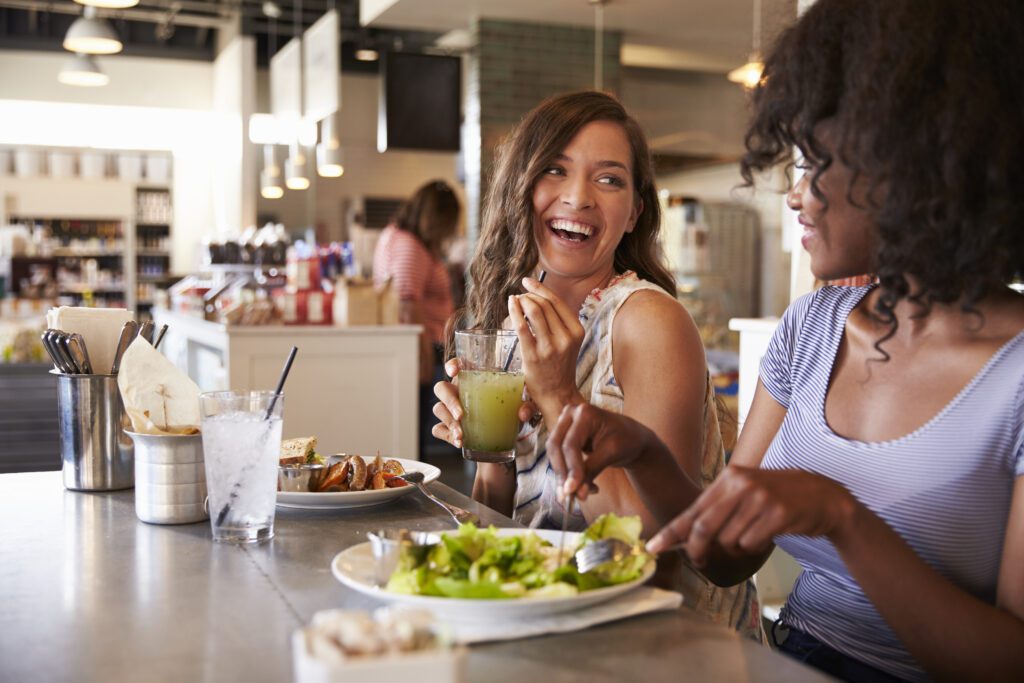
In the forced lockdown break, we all learned to cook and grill so well that we could aspire to be Master Chef winners. Mr. Pohlreich would be so happy for us. But not everyone has the time or the inclination to spend hours at the stove creating gourmet creations.
So… neither a perfectly tapped beer nor a beautifully served coffee was as much of a draw for a post-covid return to Horeca as a chef-cooked and served meal.
Food is the one occasion of a visit that has not lost its Horeca fans even in the Covid era. The same cannot be said for the remaining occasions. That’s why most businesses in the market today offer food.
There has been a major change in beer drinking visits. Nowadays, beer consumption is mostly combined with food and therefore takes place in different types of venues than the traditional pubs we were used to before.
Opportunities for guest visits
(% of guests who come to Horeca for the stated purpose)
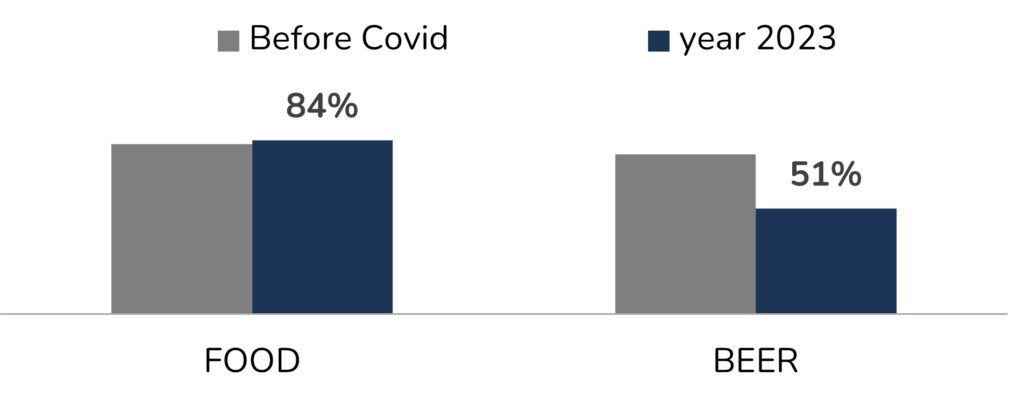
2. Café&Bistro&Bar hybrids are experiencing the biggest boom
… that understand the need to make efficient use of every hour they are open and to satisfy every visitor’s need in one place.
That is why they are able to offer you breakfast in the morning, lunch at noon and a drink in the evening, all of course topped off with coffee.
Mostly these places are owned by people who see their work as a mission and shape their business according to their own individual needs. Their offer is usually outside the market standards, they want to be healthier, more interesting, handmade. In doing so, they also meet the needs of GenZ, which also wants to differentiate itself and express its attitude and identity by visiting a particular type of outlet.
Here we come across a factor that even a non-standard outlet must respect. Everything must be photogenic and communicated on line – on instagram, facebook, so that GenZ members can identify with them publicly.
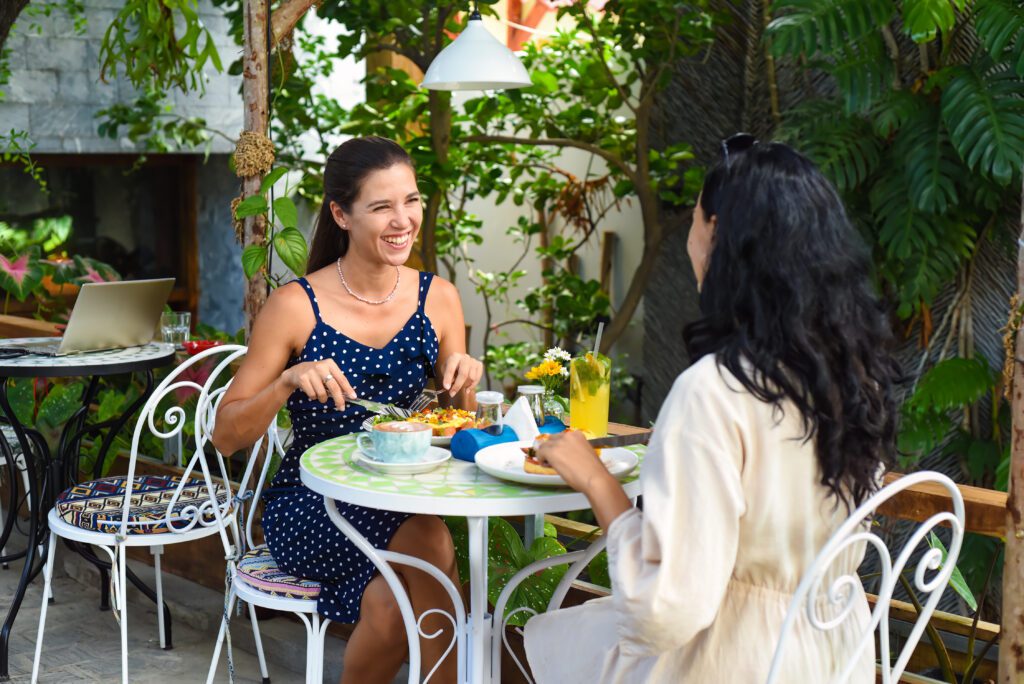
Breakfast in the morning, lunch at noon and a drink in the evening … all topped off with coffee
The most successful Horeca concept

3. Entertainment in Horeca no more discos
First of all, GenZ doesn’t go to discos. Why not? Nobody taught them. They were locked in their homes by Covid when they were supposed to be learning to go to one disco after another. And instead of dance floors, they learned to sit outside or at friends’ houses.
The older were used to “loading up” at home with a bottle of cheap wine or cheap alcohol and then going on to the disco. Today’s GenZ may start at home with better quality drinks, but then go nowhere.
When they head to Horeca, it’s to the Food Court, where they’re able to sit all day with their cell phone on wifi. And their favorite food is pizza.
So what’s the fun in Horeca today? Dance nights? Pub quizzes? Barbecues? And at championship time, watching the games? This is not positive news for liquor suppliers, who have to look elsewhere for their opportunities.
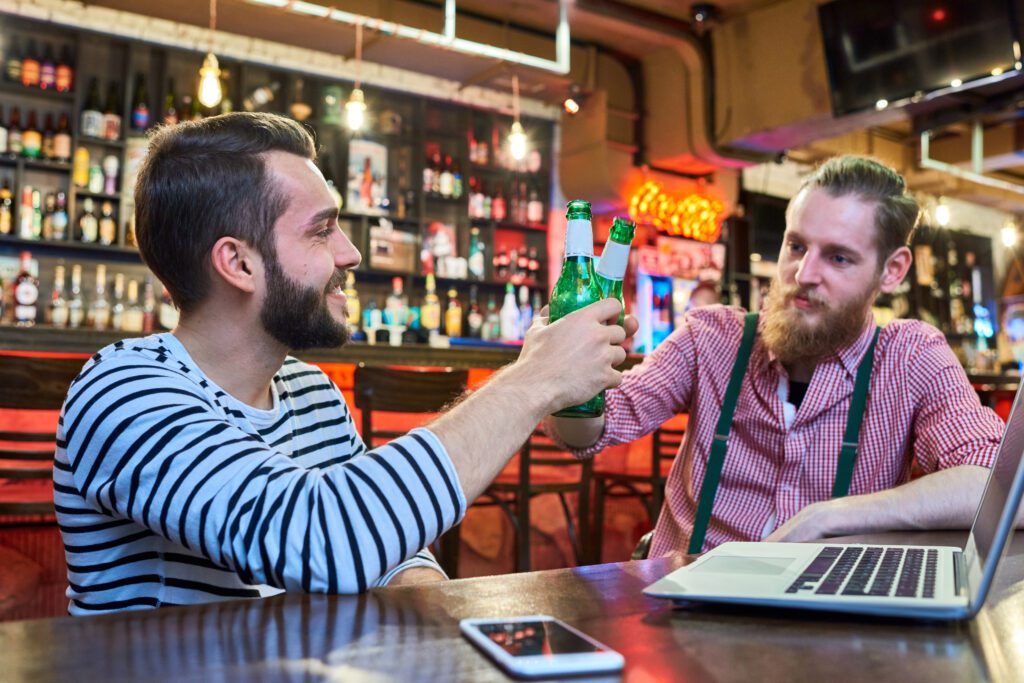
4. The quality of staff is decreasing.
At Covid, many experienced cooks and waiters were forced to find stable work outside of Horeca. Many of them have not returned to the businesses and quality staff is lacking. When summer holidays are added to the mix, the standard of service becomes trivial. Outlets are solving the situation by hiring temporary workers who are sent to the set without proper training. The result is that the place is mostly full of young girls who can only annoy the visitors.
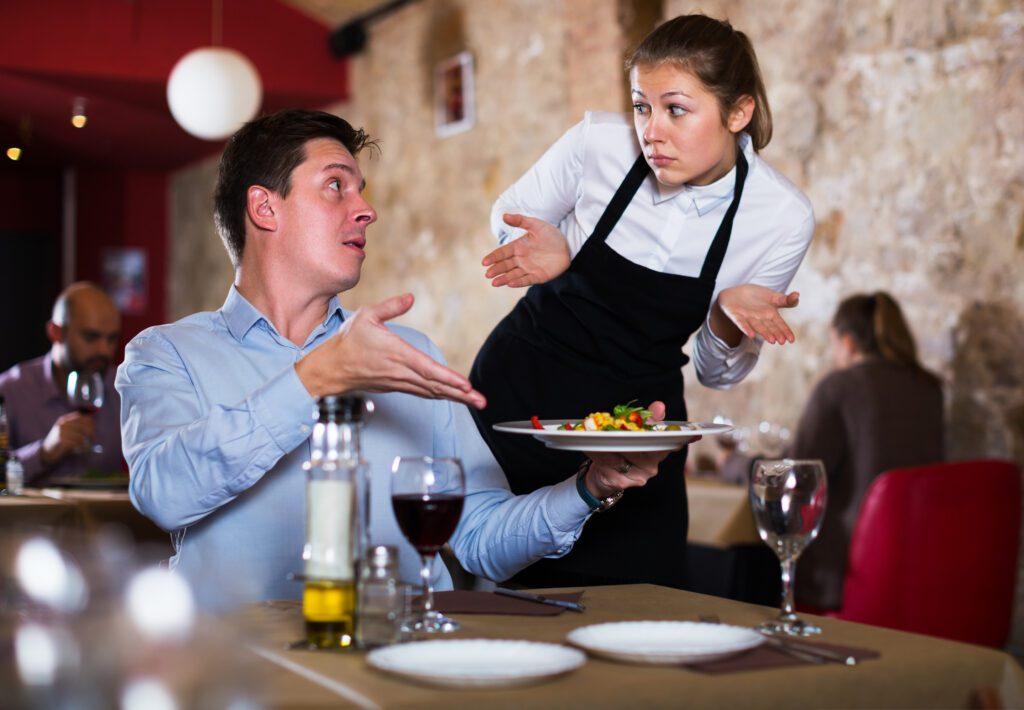
Just recently I witnessed a similar solution. It was Graduation Day, a restaurant full of guests who had come for lunch to celebrate their children’s academic achievements. While the owner had rightly extended the staff with additional part-timers to prevent guests from waiting, they didn’t know what to do. So they made it rather difficult for the experienced waitresses. They ordered food and forgot to order drinks. They brought the main course but forgot the soup beforehand. At the table next to us, they brought food for everyone but forgot one guest, which was only discovered when it came to payment. At the same time it was a problem to reach them, so the forgotten guest could not even be remembered.
This was, of course, an extreme that we don’t come across every day. But inexperienced temporary workers, who are able to poison your visit to Horeca at least, are quite common nowadays.
The consequence is that the staff is one of the worst rated attributes about visiting Horeca. Whether you look at it in terms of professionalism, friendliness, promptness. Only the prices are rated worse, but of course they are the lowest on the satisfaction scale by default.
5. GenZ needs time to decide ... and not just GenZ.
In recent years, the ability to order, or ideally complete an entire order including payment, at self-service kiosks without staff has become more widespread. Not only young people prefer this, but at GenZ even one in three always order at this kiosk if they have the option.
To a small extent, this decision is influenced by social phobia, they do not like to talk to the attendant. In addition, GenZ rate the attendants in Horeca worse than the general population.
But the main reasons for ordering at a self-service kiosk are that
- they have peace of mind when ordering,
- it’s faster for them, and most importantly
- every meal is photographed, so they don’t buy a rabbit in the bag.
This brings us to another feature of young people, pictures are more understandable to them than written text.
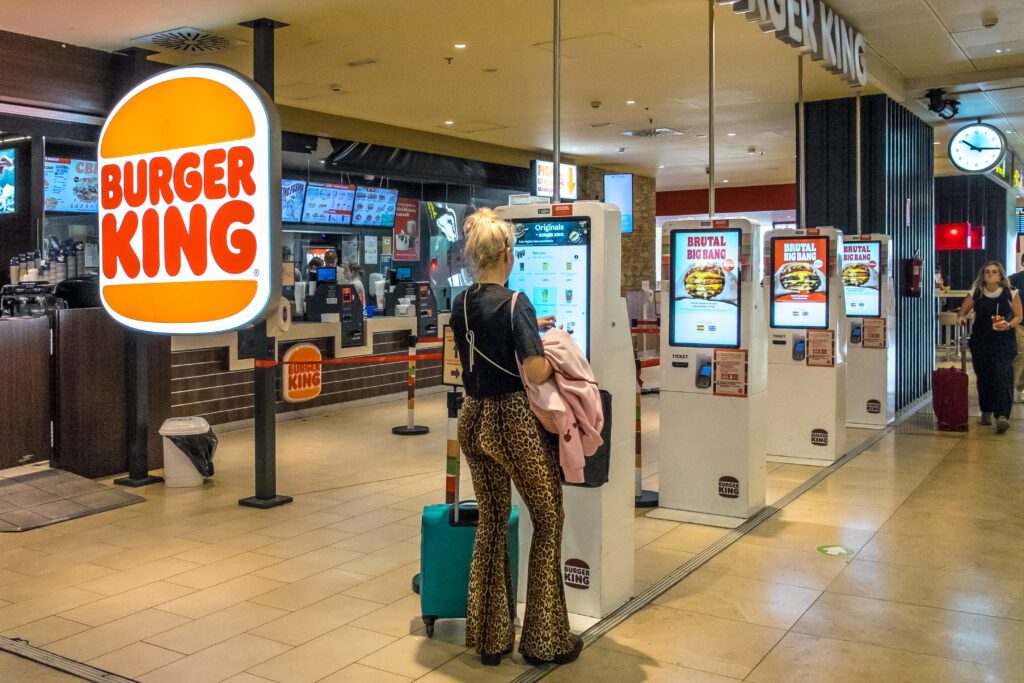
Flexibility and sustainability is the future of Horeca
If we want to compare today’s Horeca with Horeca before Covid. It’s a different market in the first place. Different types of outlets are coming up, old, uninteresting ones are disappearing. Prices are much higher and the supply is usually narrower. In covid, outlets managers have learned that they don’t need to hold large stocks.
It took 2 years, but today we can say that the attendance in the Czech-Slovak Horeca has finally returned to pre-Covida numbers. But the visitors that are coming today are very different. They have different habits, they want a different offer and we have to adapt to that because Horeca is shaped by the visitors’ needs.
